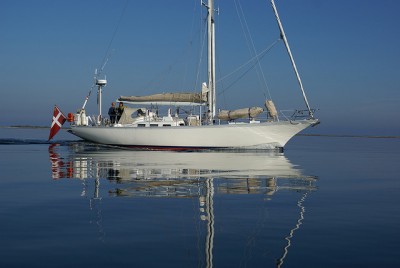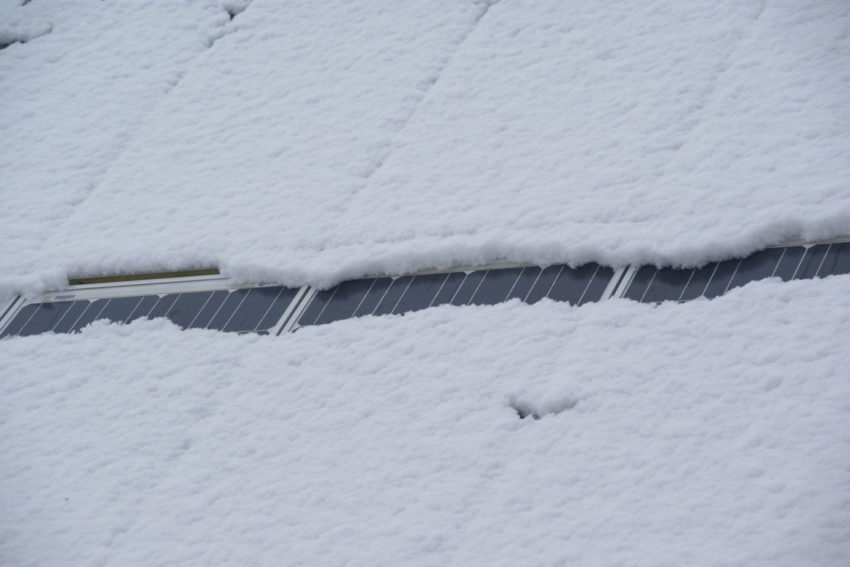No country in the world has ever run itself on wind and solar power alone; no country ever will. Weather-dependent sources are simply no substitute for coal, gas or nuclear power which are available 24 x 7, on demand. And no amount of battery storage or pumped hydro will resolve the equation in favour of the unreliables.
Jay Lehr & Tom Harris pick up on the theme below.
Wind/Solar Electric Grid Needs Fossil Fuel Backup – Here Is Why
America Out Loud
Jay Lehr & Tom Harris
27 May 2020
There is Not a Wind/Solar Electric Grid In The World Without Fossil Fuel Backup!
You might be shocked to learn that no where on planet Earth does there exist a single community electric power grid that operates with only wind turbines and or solar cells. Without an equal or greater amount of fossil fuel power, usually natural gas or coal operating on standby 100% of the time, ready for the wind to slow or get too fast and the sun to stop shining⏤brownouts and or blackouts would be everyday occurrences.
The grid is the electrical industry’s term for all of the hardware and software needed to convert fuel into electricity. The system must ensure our safety from malfunctions, security to customers, and safety for the community. It must not dip below its advertised electric capacity or brownouts and blackouts will occur crippling the companies depending on that electricity being constantly available.
For a simple example, let’s assume we are a local electric utility in Yourtown, USA. It’s a town with a population of 40,000 and another 15,000 people in the surrounding farms, along with small factories, professional offices, shops, a hospital, bakeries, etc. Everyone in the area needs reliable and affordable electricity. Your town does have a modern grid with 99.98 percent reliability.
In order to guarantee that availability, the grid must have a 75 percent excess capability above the everyday norm. Twenty five percent of the excess must be in the “spinning reserve mode,” another 25 percent must be in the “peaking mode,” and 25 percent in the “back-up mode.” Let’s examine each of these portions of the necessary reserves.
Spinning Reserve: If some malfunction happens at any time and shuts down a generating plant, a back-up plant needs to kick-in and pick up 100 percent of the lost power in seconds. If it’s a few seconds too late, the electrical demand will overwhelm the grid. It will be a disaster.
The only way to ensure that a blackout doesn’t happen is to have a back-up fossil fuel power plant already running at about 90-95 percent of rated power. If the state or local officials require the grid to obtain some power from wind turbines and solar panels, we know for sure they will not operate some of the time and there must be back up fossil fuel power equal to or greater than that provided regularly by wind and solar.
The backup plant burns fuel but creates no electricity. They will burn almost the same amount of fuel as they would if there was no solar or wind plants connected to the grid because solar and wind can not serve as backup power. So what is the point of having wind and solar power on the system. It eliminates virtually no use of fossil fuel. Yet in this election year you are hearing non stop that many folks want to eliminate the use of fossil fuel, drill no more wells, mine no more coal and switch to wind turbines and solar panels. It can’t be done and the thought that they could be backed up with batteries of any kind economically is a pipe dream today and will always be for reasons of the basic physics we will explain in a future article.
As a result, electric utilities are wasting capital, fuel, and operating costs thinking wind and solar can contribute a significant portion of their available energy. It just increases the cost of community power.
Peak mode: This is the extra electrical power that’s needed twice a day, typically for two to three hours each. First is the morning peak demand, from six to nine AM to cook breakfast, get ready to go to school and work.
The other high demand period is usually from about five to seven PM. That’s when the extra power is needed to cook dinner, fire up the AC or central heat, etc. But solar plants can’t fill these peak demands either. That’s because solar produces electricity near mid-day when it’s needed the least. Wind turbines might be put to work a few hours in the morning or evenings.
In all cases, however they still need the spinning reserve fossil-fuel back-up plant running at about 90 percent of rated power, 100 percent of the time.
Back-up Reserve: These power plants are like a spare tire in the trunk of a car; they sit there until called to duty. But unlike the spinning reserve, these reserves don’t need to be up and on-line in seconds. So, they only operate when they are started up, typically for scheduled maintenance on other plants.
Depending on the type of plant, it may take several hours or more for them to come online, and then they may run for days, weeks, or a year non-stop. Having a power plant just sitting there, doing nothing most of the time is very expensive, but is a valuable insurance policy against failure. Wind, nor solar can fill this insurance bill either because they can never be reliable 24 hours a day for any large number of days
Let’s examine the real-life experience of Germany that made the bold decision to go all-in on being green. It is now the number one producer of wind and solar electrical power in the world on a per capita basis.
In 2004 Germany launched an aggressive plan to replace many of their coal and nuclear plants with wind and solar.
By 2018 Germany had an installed electrical base of about 210 gigawatts. Of that, 28 percent was wind power, 26 percent solar, and the remaining 46 percent was their remaining fossil fuel and nuclear power plants along with a little hydro. At least that is the nameplate rating of the power capability of these solar and wind installations when operating under the best conditions. However, the real production is startlingly different.
While these solar and wind plants could theoretically produce 46 percent of Germany’s needs, in actuality, they only produce about 12 percent of Germany’s total electrical output.
Who knew that one of the world’s most prosperous and industrialized nations could not figure out how to produce enough electricity to meet the needs of its own people and industry from wind and solar power? But we now know theirs was an insurmountable task. How did they not realize this. Those in the US who are trying to do the same do not realize it either.
To relieve this national shortage, Germany has been importing vast amounts of electrical power, mostly from France, and are paying exorbitant rates for it. The average cost of electricity in Germany is now almost three times the cost in the United States.
Germany is now launching a major program to rebuild dozens of fossil-fueled power plants. They have also signed a contract with Russia to build a natural gas pipeline from Siberia to fuel their electrical demand and to back up its unreliable wind and solar plants. If the Democrat Party wins in November it would appear the United States will follow the unfortunate path that Germany took.
Note: Portions of this article were excerpted from the 2020 book A Hitchhikers Journey Through Climate Change with permission of the author Terigi Ciccone. The book is the best possible source for parents and grandparents to explain reality to their children.
America Out Loud



Reblogged this on ajmarciniak.
How many spin doctors does it take to change a light bulb?
One to hold the bulb and as many as it takes to turn public opinion.
Vast resources are being invested in Electric Cars and their supporting systems. A case can be made for reducing health hazards by banning fossil fuel vehicles from city centres but there is no case for using them to reduce CO2 emissions. All they do is to concentrate all the individual loads via the grid to the power stations, normally CCGT’s burning carbon fuels, that are needed to manage the variability of demand and supply of the regional and national networks.
We should concentrate on designing, constructing and upgrading systems to reduce losses and waste of power and on using renewable, but inherently unstable power sources wherever they are practical or can be saved economically in useful quantities.
Actually, they concentrate the variable and intermittent power demand to the grid. The grid’s response is not CCGT but OCGT. CCGT is not flexible enough to address the unpredictability wind, solar, and electric vehicles add to the grid. OCGT gas is about half as efficient as CCGT. Therefore, little or no CO2 is avoided.
The extra cost is for nothing in return!
I agree that OCGT has most rapid response and is still used for emergency breakdowns and local outages. The recent UK generation average, over last ten days for OCGT was 43.01 MW.
Modern CCGT generators can cope with the variability of customer demand and solar and wind generation. Having both flexibility and efficiency it now provides the main balancing output and demand and averaged 9,712.28 MW, over 200 times as much, over the same period.
This is all Agenda 21. They know wind and solar can’t provide energy. The false narrative about climate change is a way to destroy a country’s ability to maintain an economic and financial infrastructure, eventually collapsing it. The end game is to kill off 6 to 7 billion people that the WEF elites deem as unsustainable.